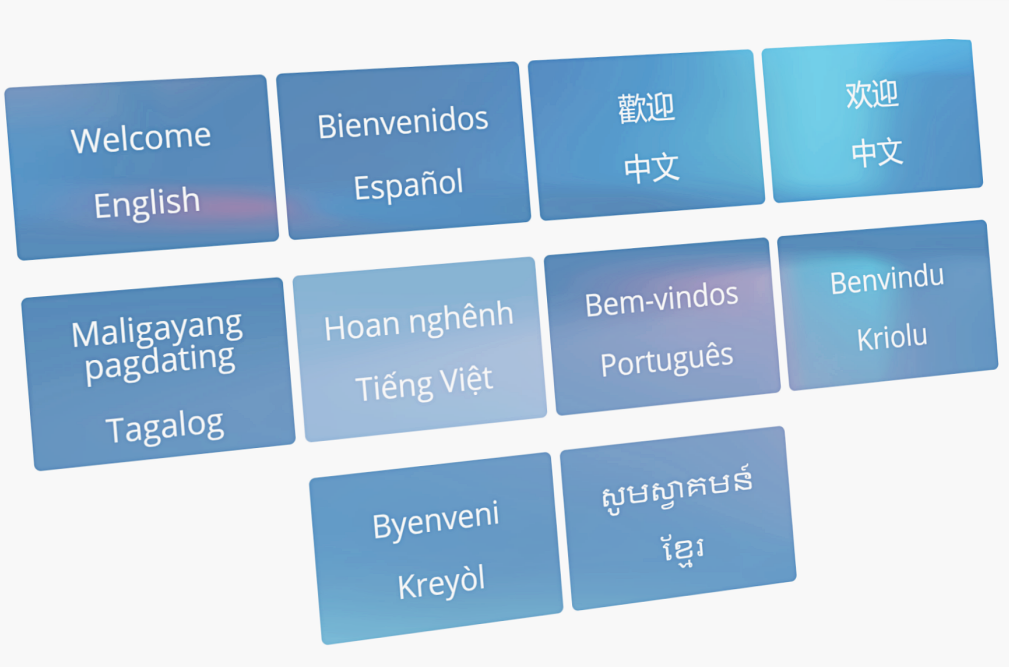News & Notes
Millions of invitations. Hundreds of organizations. Ten languages. Equity in the center. Go!
Starting today, the Culture & Community in a Time of Transformation: A Special Edition of Culture Track Wave 2 survey is being sent out by hundreds of arts & culture organizations to millions of people across the country.
Millions of people. Deep breath. It’s incredible what this sector can do when we all pull together.
We can’t wait to extend and update our understanding of how people’s circumstances, attitudes, expectations, and engagement with arts and culture may have changed after a full year of the pandemic. Their responses to this survey will let us more deeply explore the future of online participation and connection and understand the roles people want arts and culture organizations to play in social change and racial justice.
Among the many changes we’ve made in Wave 2, we’re working to broaden the bounds of arts and culture, extend access to the survey for participants who speak languages other than English, and deepen our analysis and meaning-making beyond what we did last year in Wave 1.
- Broadening the definition of arts and culture — both in how we ask about it on the survey and in who distributes the survey to their users/audiences/attenders — has been key to our approach for Wave 2. The survey’s being shared by many new kinds of organizations, such as public libraries, public parks, for-profit performance venues, and fairs and festivals. We’ve been actively inviting in arts and culture organizations located in rural areas and those that primarily serve BIPOC audiences, since both were underrepresented in the Wave 1 sample. We’ll be sharing more information and graphics about the characteristics (geography, genre, size, and audience dimensions) of the participating organizations in the coming weeks.
- Translating the survey for people who prefer to take the survey in a language other than English has also been a critical change in our approach this year. With the support of the Barr Foundation and Multilingual Connections, we’re delighted to be providing the survey in ten languages: English, Spanish, Simplified Chinese, Traditional Chinese, Vietnamese, Portuguese, Tagalog, Khmer, Haitian Creole, and Cape Verdean Creole.
- We’re also extending our analysis of this valuable data by working with a number of new supporters to explore key topics of interest, specific parts of the sector, particular geographies, etc., and to convene discussions to activate the research.
- LaPlaca Cohen will be leading the creation of a public report for the Aroha Foundation focused on creative aging, which will draw from this survey’s wave 2 data and will be supported by a representative sample of Americans ages 55+ in the U.S. population.
- We’re delighted to share that the federal Institute for Museum and Library Services (IMLS) has awarded Culture + Community a National Leadership Grant to support the systematic inclusion of libraries in this sample and the development of a library-specific analysis that the Slover Linett team will be sharing through conferences and convenings.
- The Barr Foundation is sponsoring a statewide public report for Massachusetts that’s supported both by additional responses from a representative sample of Massachusetts residents and distribution through the lists of more than a hundred arts and culture organizations in the state. The Slover Linett team will also be creating regional “mini reports” that highlight the unique responses of Massachusetts residents by region, along with convenings to share and discuss the findings at the local level.
- With generous support from the Knight Foundation, LaPlaca Cohen’s Culture Track team will host an online convening to discuss and activate the research. This participatory summit will take place in late fall, 2021 and is currently being planned.
Getting to this week’s survey launch has truly been a collective effort. We feel such deep gratitude to our colleagues at LaPlaca Cohen and Yancey Consulting, the many foundations and companies supporting this work, our phenomenal team of methodology and sector advisors, and the dozens of people across the field who have taken time to talk to us about both their concerns and their hopes for this research.
We invite you to visit our new website dedicated to this study, and as always we are here if you’d like to reach out.

